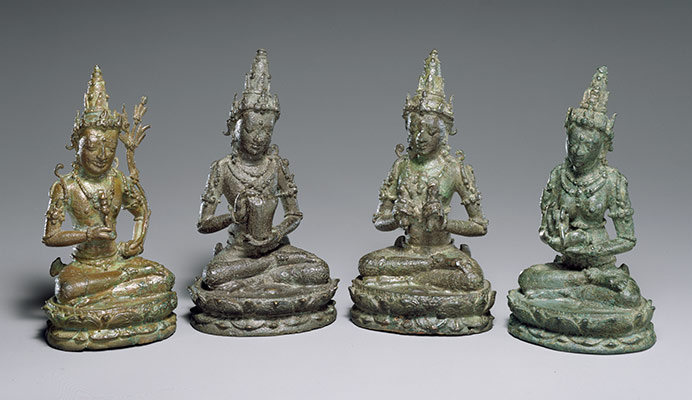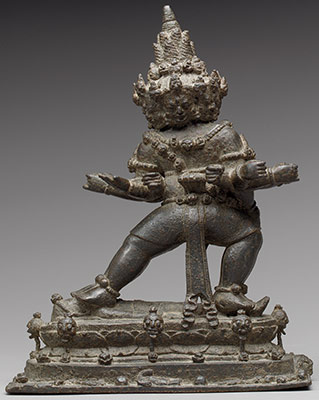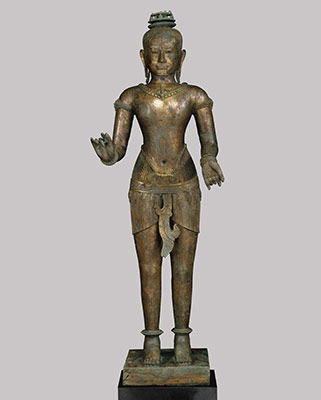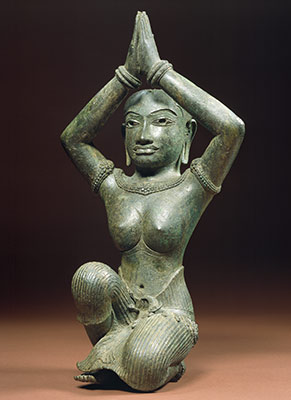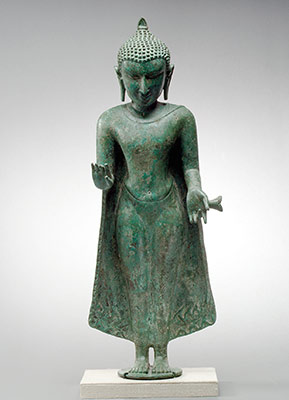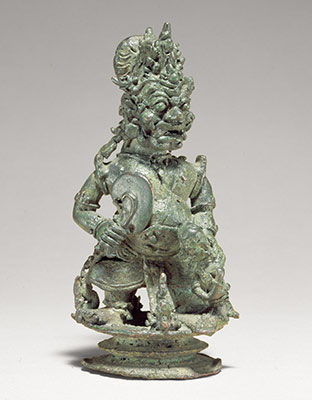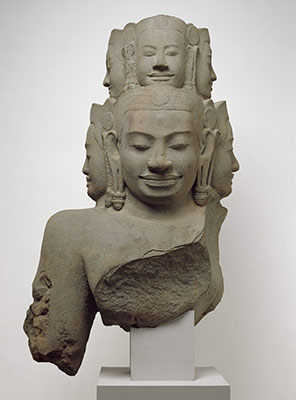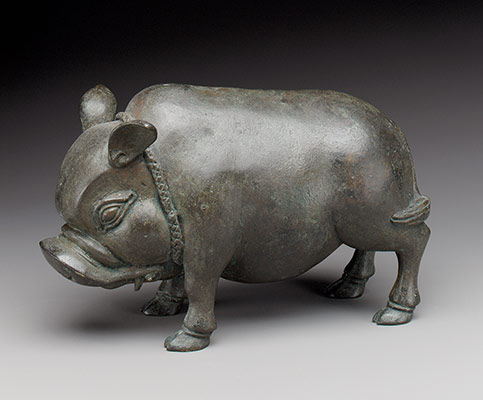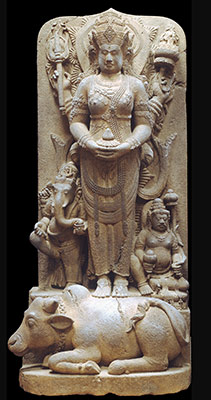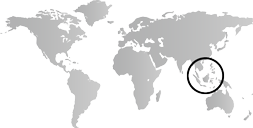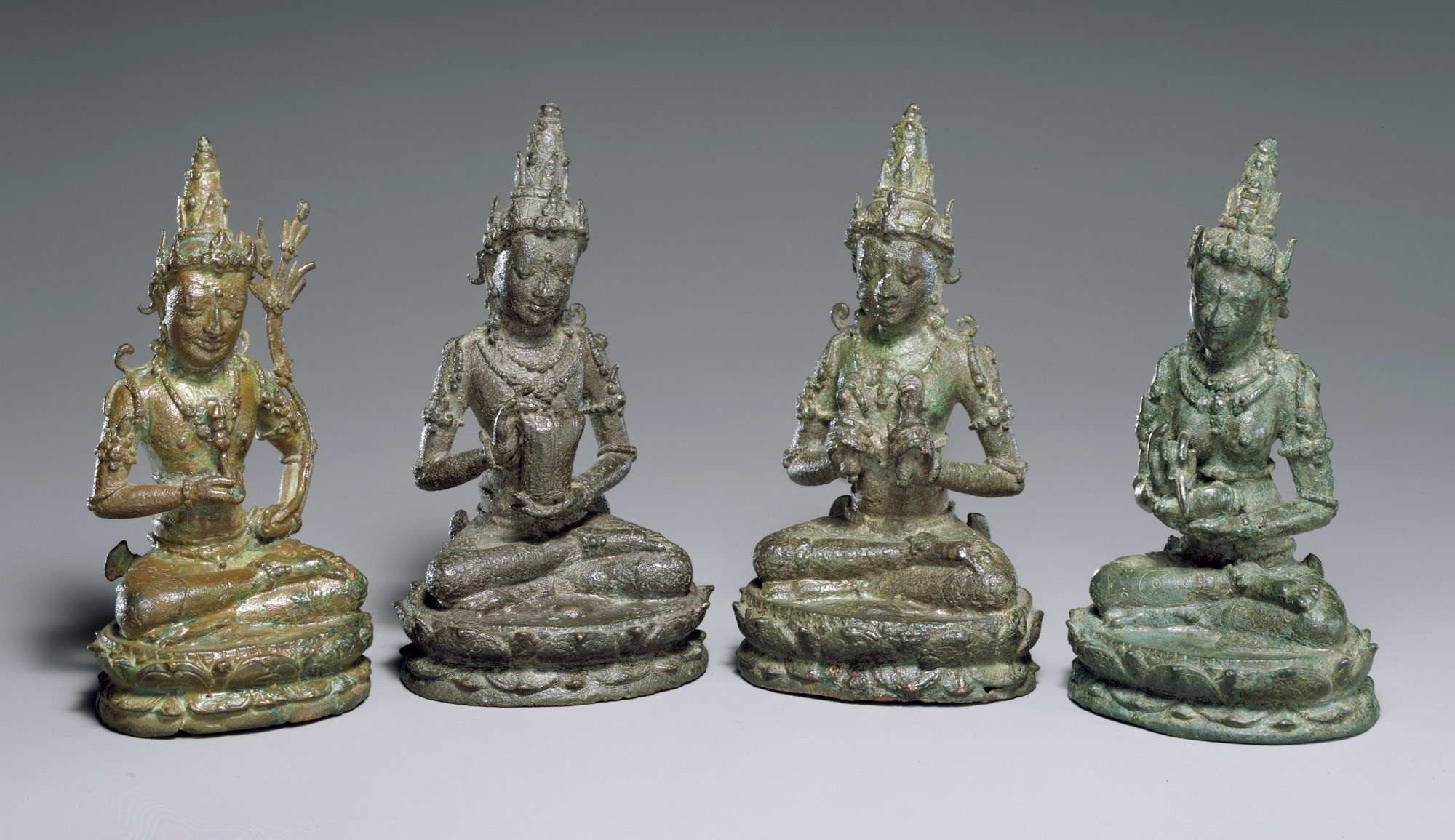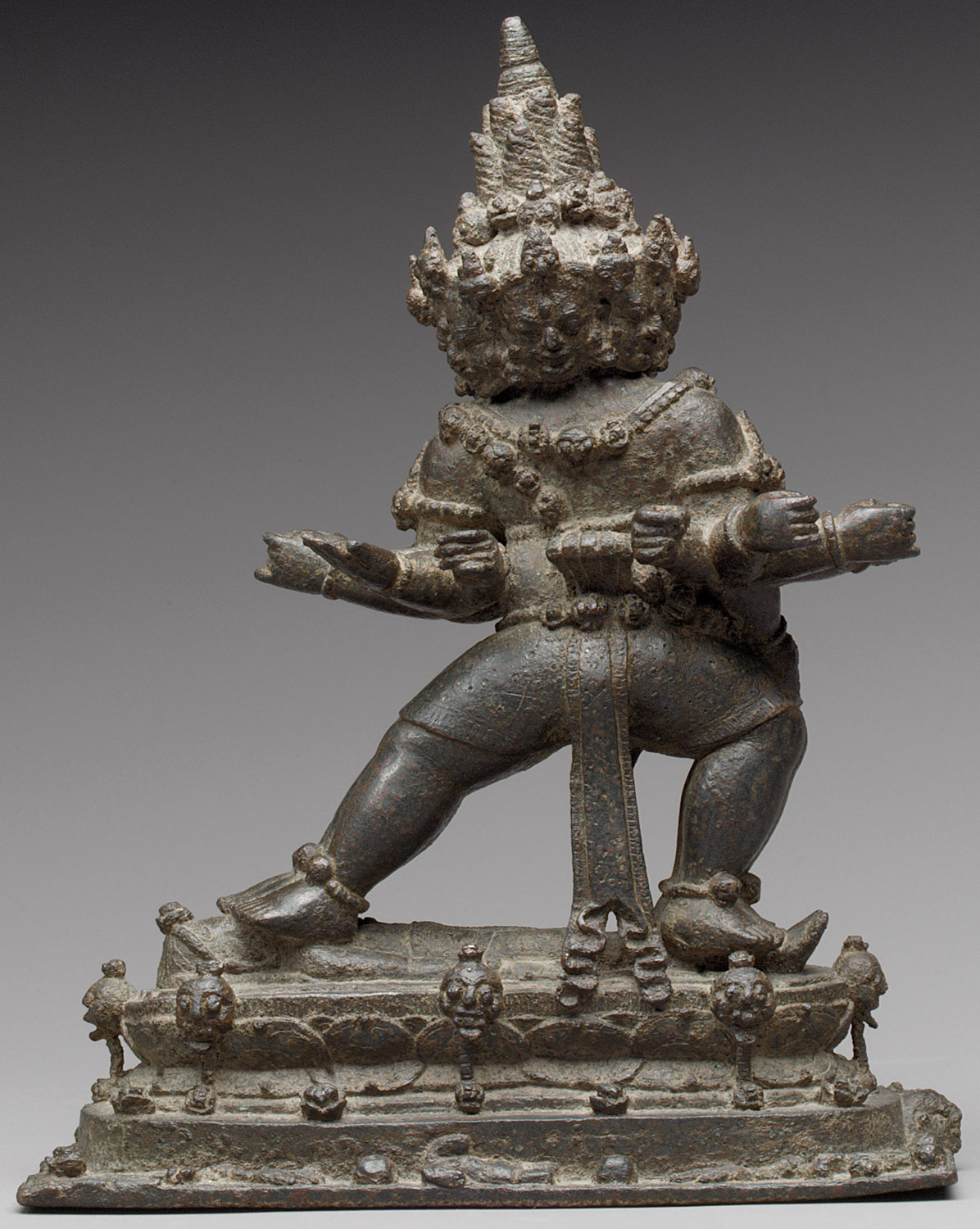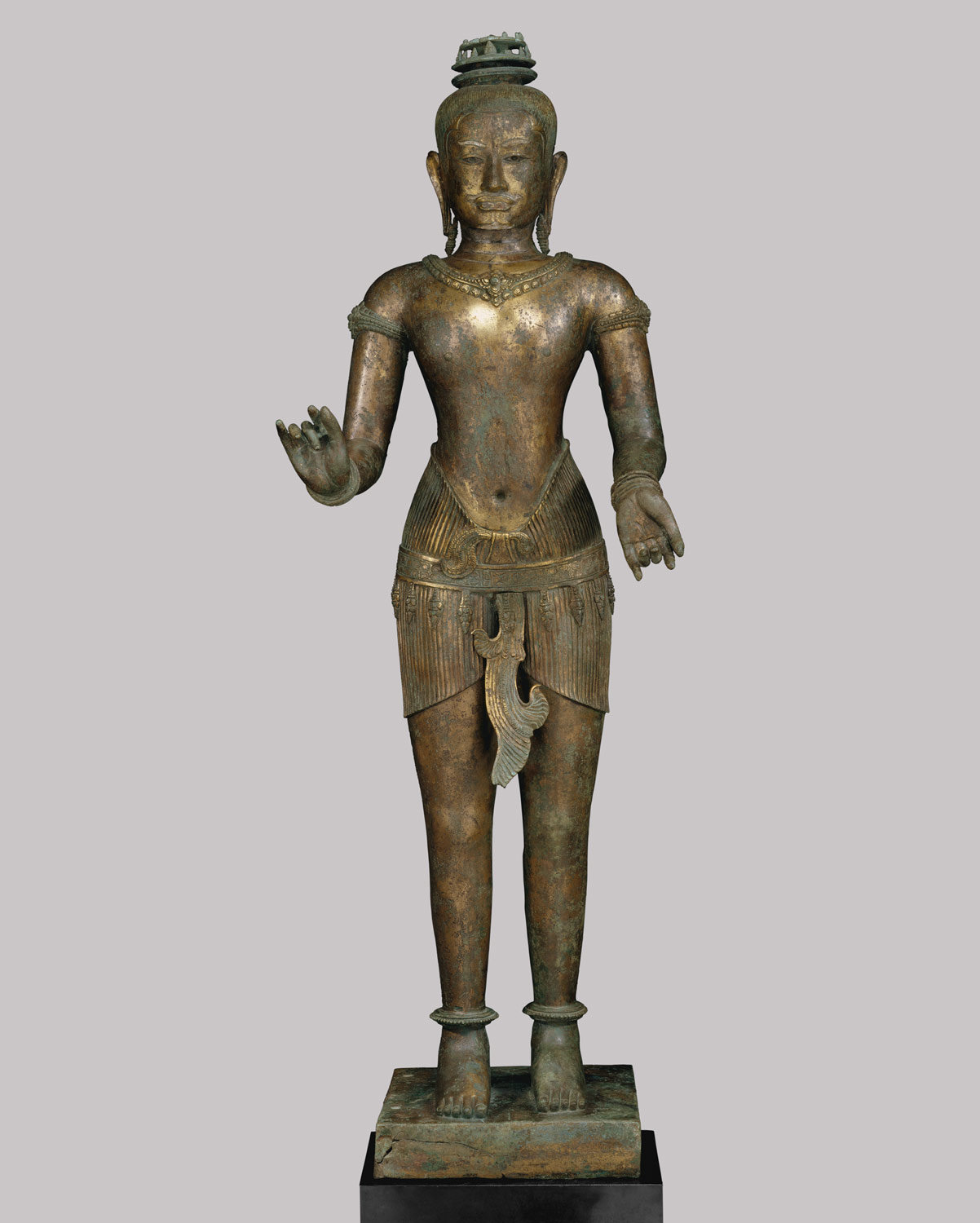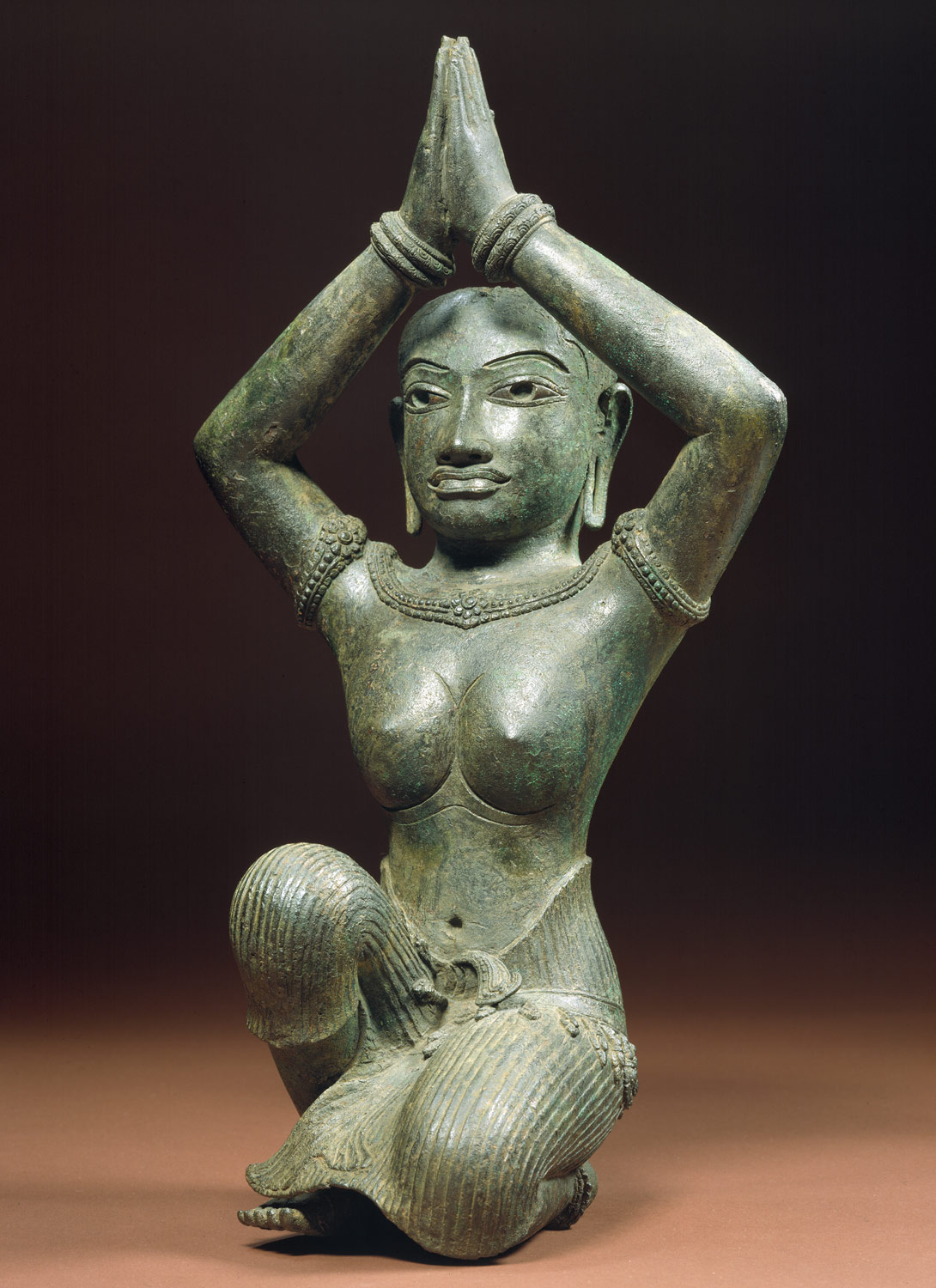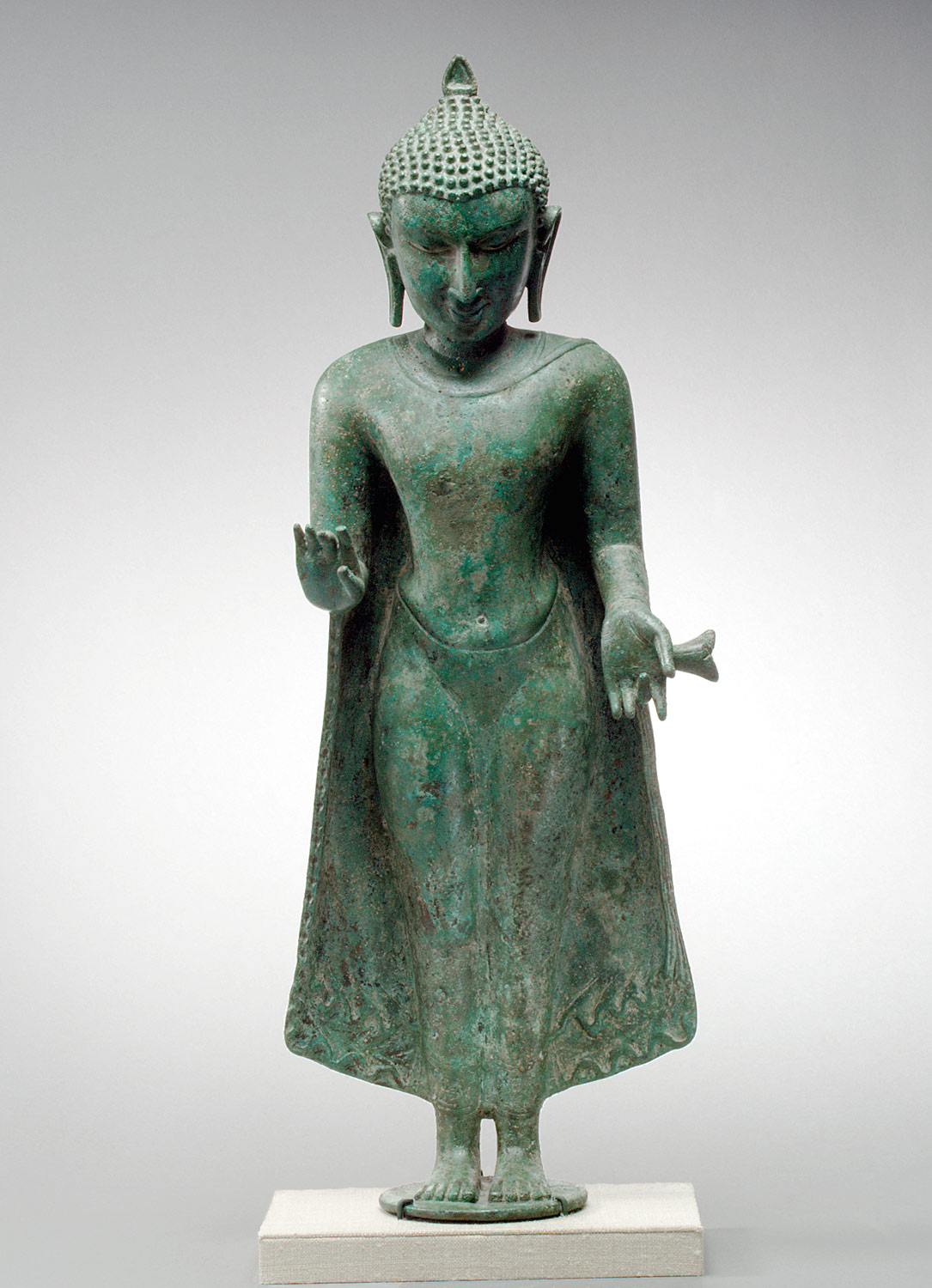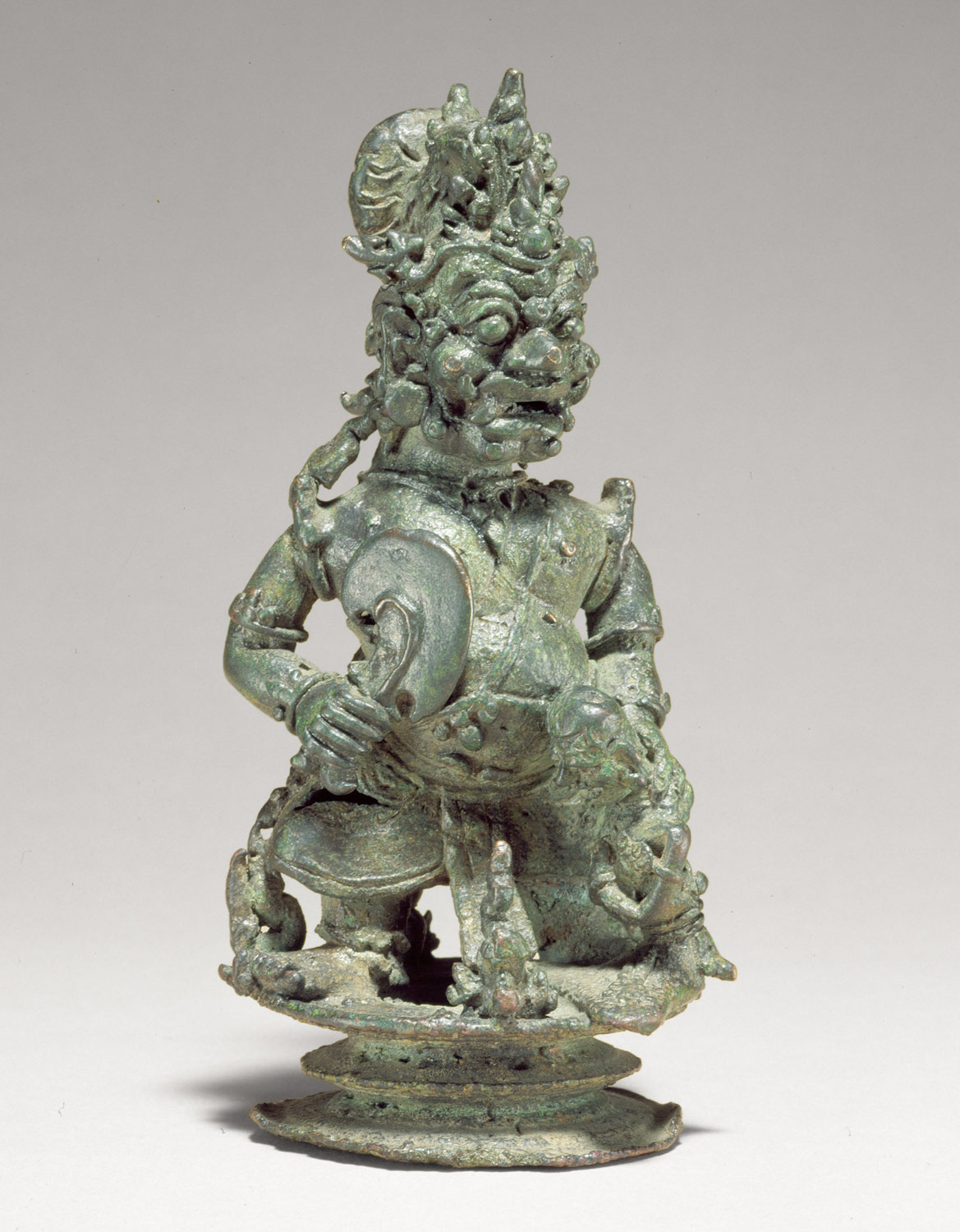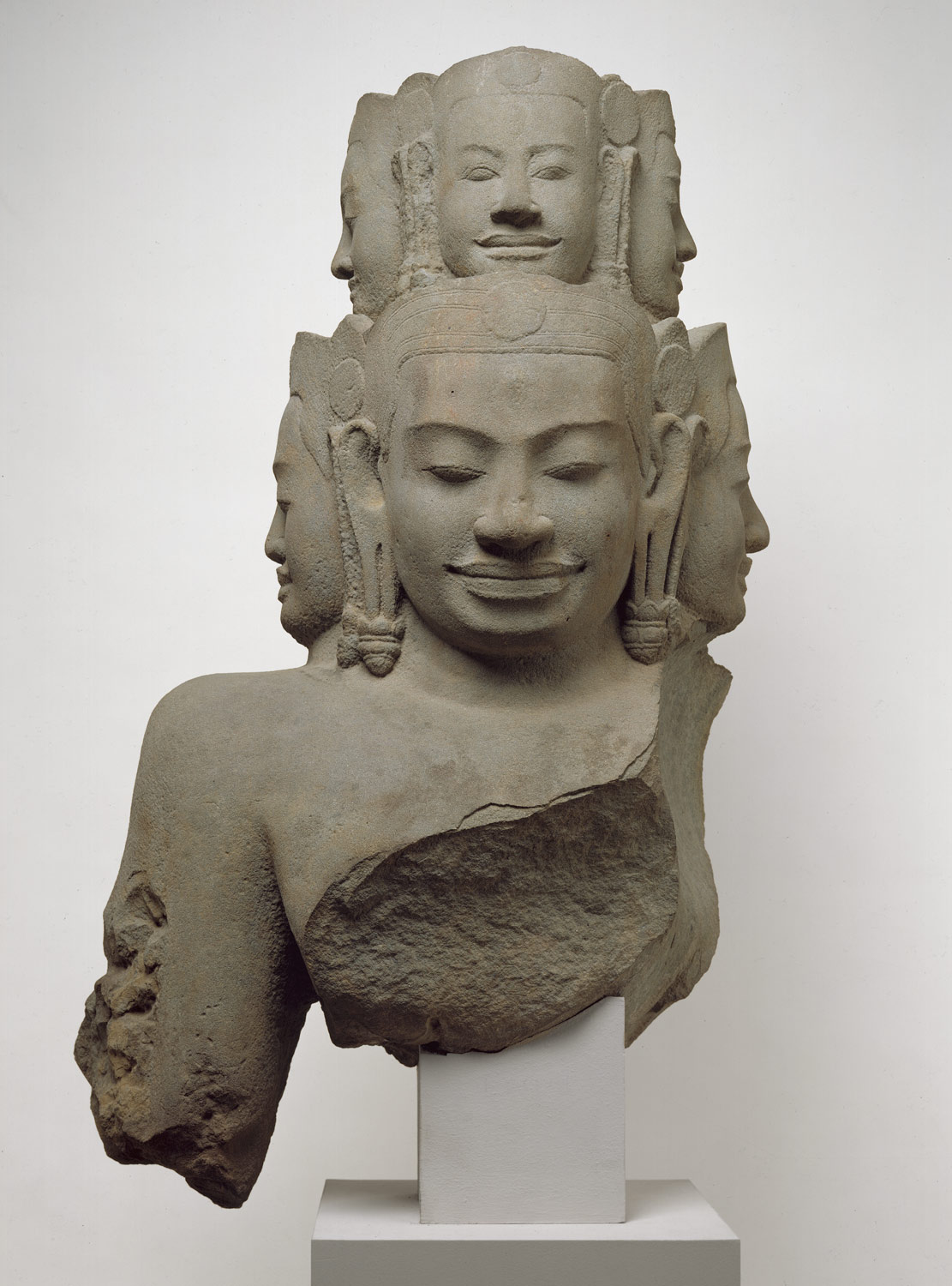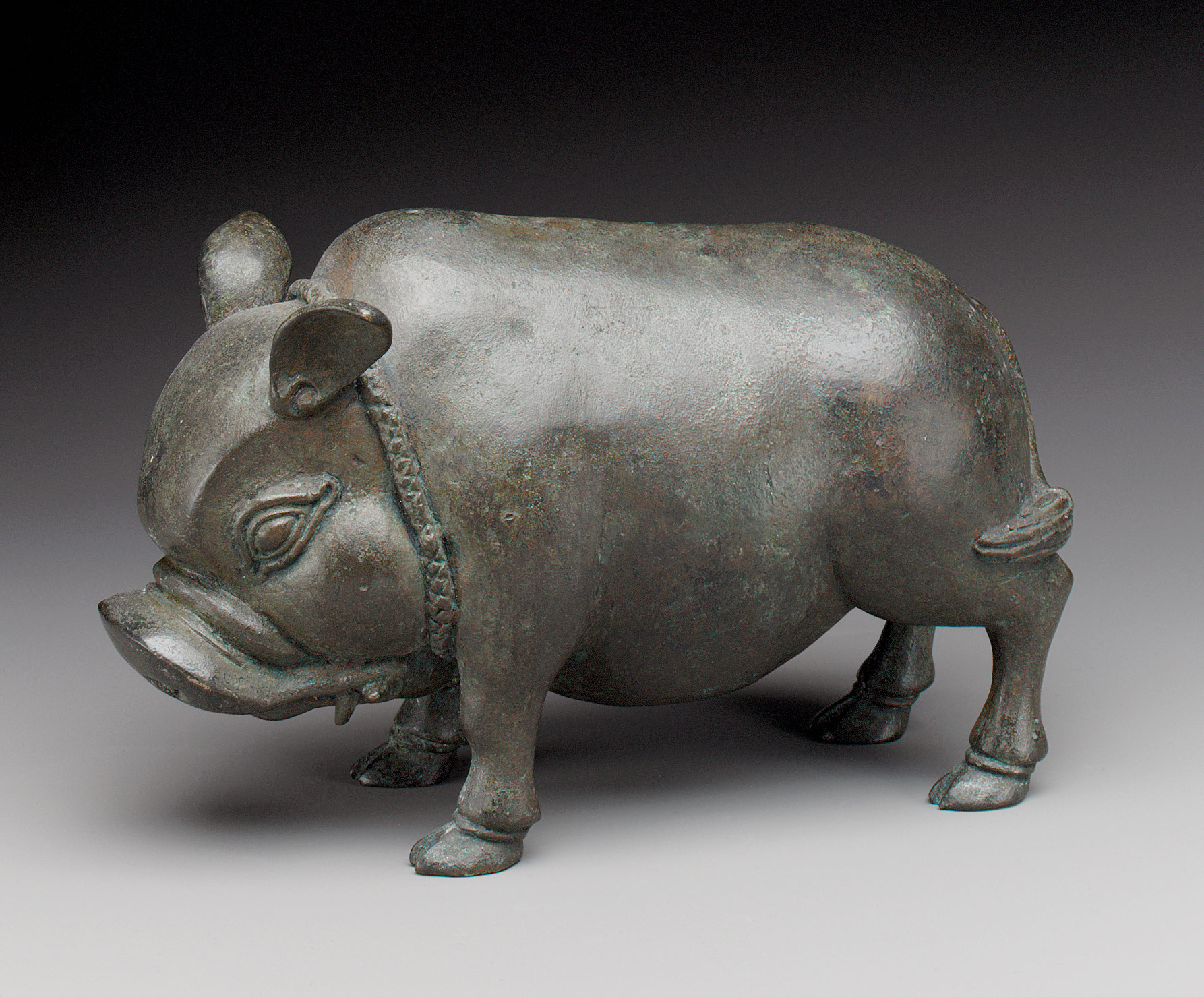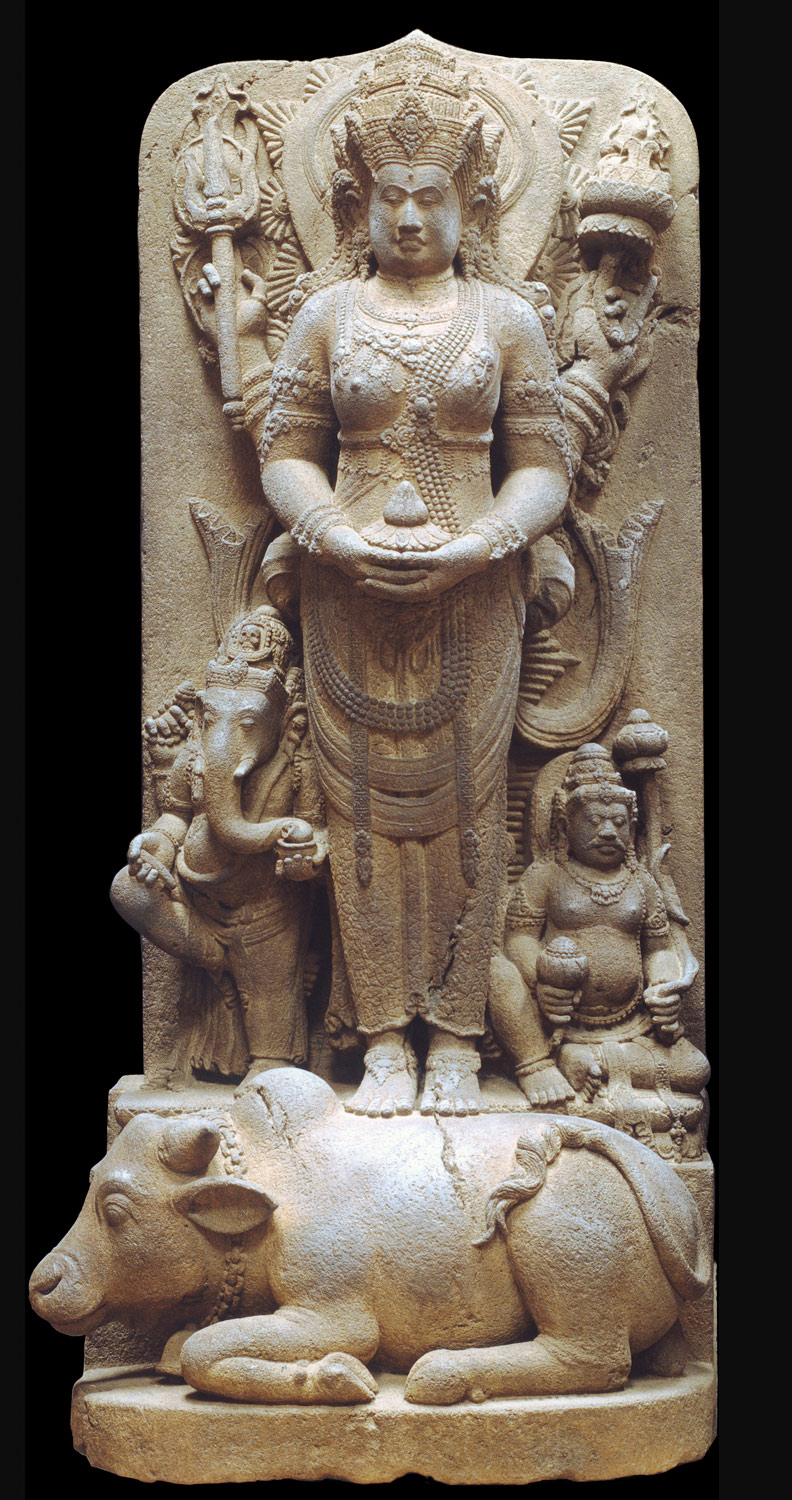The Khmer capital at Angkor is the center of a powerful, opulent empire that includes most of continental Southeast Asia. The Angkor period is noted for the vast number of breathtaking monuments constructed from the late ninth to the thirteenth century. Ranging from relatively small structures to the gigantic Baphuon and Angkor Wat, these temple-mountains are profusely decorated with sculptures, which are used to provide a relative chronology for other works from the same periods. Angkor hegemony is challenged in the middle of the fourteenth century with the rise of new kingdoms in Laos and Thailand. The establishment of the kingdom of Majapahit in eastern Indonesia in the thirteenth century marks one of the high points of unification in island Southeast Asia. Sculptures, many of large scale, and metalwork are the most important artistic traditions during the period.
Southeast Asia, 1000–1400 A.D.
Timeline
1000 A.D.
1100 A.D.
1100 A.D.
1200 A.D.
1200 A.D.
1300 A.D.
1300 A.D.
1400 A.D.
Overview
Key Events
-
1001
Lopburi kingdom in Thailand sends embassies to China seeking assistance in gaining independence from the Khmers.
-
1019–1042
The rule of Airlangga in Java is marked by devotion to the Buddha and the Hindu god Shiva and a flourishing of the arts, often adapting themes from Indian culture.
-
1025
The Chola kingdom in South India raids Shrivijaya.
-
1044–1077
Anawrahta, founder of the first Burmese empire, ascends to the throne of Bagan. His rule and that of his successors is marked by patronage of Theravada Buddhism, an early tradition based on texts in Pali, thought to have been introduced to the region in the early part of the first millennium. By the mid-thirteenth century, the Buddhist church in Bagan is at the center of a cultural “golden age” that includes monumental building projects and a flourishing literary culture.
-
1050–1066
Udayadityavarman II builds the Baphuon at Angkor; the temple-mountain is noted for its great size and elegant sculptures.
-
1112
Miyazedi stone inscriptions, important historical records, provide the earliest evidence of the Burmese language.
-
1113–1145 or later
Suryavarman II builds the great temple of Angkor Wat, one of the most renowned of the Cambodian temple-mountains. Surrounded by a moat about 820 feet wide, Angkor Wat measures about 4,920 feet from east to west and 4,260 feet from north to south. It is approached by a long causeway and consists of three terraces and five towers. The monument is dedicated to the Hindu god Vishnu.
-
1177
Rival Chams (based in central Vietnam) briefly capture the Khmer capital at Angkor.
-
1181–ca. 1243
Jayavarman VII, who briefly reestablishes Mahayana Buddhism as the Khmer state cult, builds the city of Angkor Thom with the Bayon temple-mountain at its center. Unusual bas-relief scenes of daily life decorate the external galleries of the Bayon, which is dedicated to all divinities under the direction of the Buddha. Bayon is famous for its countless towers crowned by large smiling faces.
-
1243–1295
Hinduism is restored as the Khmer state religion during the reign of Jayavarman VIII.
-
ca. 1250
Lopburi, a small kingdom in Thailand, gains independence from the Khmer empire and sends envoys to the Mongol court in China between 1280 and 1299.
-
1258–1293
Periodic Mongol incursions into mainland and island Southeast Asia are repulsed.
-
1292
Marco Polo visits northern Sumatra.
-
1293–1310
Kertarajasa establishes the kingdom of Majapahit in Java.
-
1296–1297
Chinese traveler Zhou Daguan’s Customs of Cambodia provides invaluable information about life at Angkor, and may represent the first recorded instance of the name Siam or Siem for Thailand.
-
ca. 1300–1400
Shrivijaya collapses. The Thais launch raids against Angkor.
-
ca. 1350
The adoption of the Theravada form of Buddhism has a long-standing impact on the culture of Cambodia, including the change from Sanskrit to Pali as the liturgical language and from brick or stone to wood as the architectural medium.
-
1351–1369
The reign of King Ramathibodi I marks the beginning of the Ayudhya kingdom located to the north of the mouth of the Chao Phraya River, which empties into the Gulf of Thailand.
-
1353–1373
Fa Ngum founds the Lan Xang kingdom, which controls Laos and parts of Thailand. Theravada Buddhism is promoted as the state religion, and an important golden image of the Buddha known as the Prabang is brought to his capital from Angkor.
-
1365
The kingdom of Majapahit in Java, flourishing under the rule of Rajasanagara (1350–89), is celebrated in the Nagarakertagama, an epic poem composed by the Buddhist monk Prapanca.
-
ca. 1370
Chinese restrictions on the export of ceramics help to spur the development of Southeast Asian traditions such as that of the kilns at Sukhothai in Thailand, which remain active until the sixteenth century.
Citation
“Southeast Asia, 1000–1400 A.D.” In Heilbrunn Timeline of Art History. New York: The Metropolitan Museum of Art, 2000–. http://www.metmuseum.org/toah/ht/?period=07®ion=sse (October 2001)
